At first glance, it’s clear that the TCL A300 NXTVision aims to be more than just an ordinary television. It offers a picture display mode that – unlike competitors from Korea, Samsung The Frame – is completely free. Additionally, just like its rivals, extras are included at no charge. In the packaging, alongside the television, we find extra frames that mimic light wood and a flat wall mount, allowing the television to truly resemble a gallery piece. When it comes to everyday use, the standout feature is the Google TV system – comprehensive, fast and offering access to a massive number of apps. And if we feel like stepping out of the digital museum and jumping straight into the gaming world, the A300 can surprise us. With two HDMI 2.1 ports, 144 Hz, VRR, ALLM, and a very low input lag, even demanding gamers can feel at home here. Well... perhaps except for those sensitive to motion blur – as this remains one of the bigger issues with this model. There are also downsides. While the picture mode is free – which is commendable – the actual quality of the available graphics falls noticeably short compared to what Samsung offers in its paid ART Store. The displayed images resemble photos rather than realistic reproductions of artworks. Unfortunately, the A300 – much like the competing Hisense S7NQ – performs poorly here and additionally has some software issues. The brightness of the television itself also leaves much to be desired – it’s the dimmest of the “framed trio,” which translates to average daytime viewing and limited HDR effect. Nevertheless, the TCL A300 NXTVision is a reasonably sensible alternative to Samsung The Frame or S7NQ – especially if we are looking for a cheaper solution without additional charges for access to the “gallery” mode and with an operating system that doesn’t limit us in any way regarding the number of apps. However, it’s important to remember that this is a proposal with a lot of compromises. If we want to save a bit and don’t expect top-notch picture quality, the A300 can hit the visual bullseye. Otherwise, it’s worth looking at its competition.
- Matching (Score)
- Our verdict
- TV appearance
- Where to buy
- Contrast and black detail
- HDR effect quality
- Factory color reproduction
- Color reproduction after calibration
- Smoothness of tonal transitions
- Image scaling and smoothness of tonal transitions
- Blur and motion smoothness
- Console compatibility and gaming features
- Input lag
- Compatibility with PC
- Viewing angles
- TV efficiency during daytime
- Details about the matrix
- TV features
- Apps
- Playing files from USB
- Sound
TCL A300W NXTVision vs Samsung The Frame 2025 (LS03F)
Direct compare
A300W / A300W PRO / NXTVision
The Frame / LS03FAU


Panel type: LCD VA
Resolution: 3840x2160
System: Google TV
Model year: 2024
Complete the survey to find out the result

Panel type: LCD VA
Resolution: 3840x2160
System: Tizen
Model year: 2025
Complete the survey to find out the result

Overall rating
6.6
7.0
Movies and series in UHD quality
6.2
6.8
Classic TV, YouTube
6.0
6.5
Sports broadcasts (TV and apps)
5.9
6.4
Gaming on console
8.2
8.3
TV as a computer monitor
8.2
8.2
Watching in bright light
4.7
6.3
Utility functions
7.7
8.1
Apps
9.6
8.7
Sound quality
6.0
6.0
Complete the survey to find out what fits your preferences
Advantages
Frames styled like a picture in the set
Bracket included
VA matrix with decent contrast
Supports all popular HDR formats, including Dolby Vision and HDR10+
Great for gamers: VRR, G-Sync, ALLM, low input lag
High refresh rate - 144Hz
Free "picture mode"
Supports DTS:X and Dolby Atmos
GoogleTV operating system with the largest app base
Matte panel effectively reduces reflections
Screen customisation option with interchangeable frames + art mode
Free add-ons including wall mount + OneConnect module
High native contrast
Good brightness
High refresh rate - 120/144Hz
Plenty of features for gamers - VRR, ALLM, Gamebar, proprietary motion smoother functioning in games
Disadvantages
Low brightness
Motion blur issues
No recording function on USB or PiP
Inferior image quality in "art mode" compared to Samsung The Frame
Colours and blacks fade significantly in sunlight
No VESA standard
Software bugs
No HGiG mode – makes precise HDR settings on the console difficult.
No DTS support – requires additional equipment for some films on Bluray discs.
Paid picture mode
Our verdict
Samsung The Frame 2025 is a TV like no other – and even though it has competition now, it still does it best. The matte panel, flush with the wall, and one thin cable thanks to the One Connect module make the device resemble a piece of art more than any other screen. The Art Store app continues to offer the best scans of artworks on the market (even if they are subscription-based), and with interchangeable frames, we can match the TV to the interior almost like furniture. When it comes to the picture itself, because after all, we are also talking about a regular TV, there are no major changes, but also no disappointments compared to last year's model LS03D. The Frame still offers high native contrast and solid brightness at 600 nits, which combined with the matte coating provides very comfortable daytime use. The colours are not as vibrant as in glossy screens, but compared to competitive matte constructions – they fare the best. A novelty is the 144 Hz refresh rate, though in practice it will mainly benefit PC gamers. And indeed – in terms of features for gamers, The Frame has nearly everything: low input lag, support for variable refresh rate (VRR), automatic game mode (ALLM), Game Bar, and a unique motion smoother designed for gaming. Unfortunately, not everything is as perfect as it might seem. Why? Because the HGiG mode is missing, which suddenly disappeared from the latest version of the Tizen system. And here Samsung really should respond, as for many gamers this is a key element in choosing a screen. And we fully understand that. Although LS03F The Frame 2025 does not bring major revolutions, it is still a unique TV that, aside from its appearance, offers a quite solid picture and advanced gaming features. It’s just a pity that year after year we also receive new compromises.
TV appearance






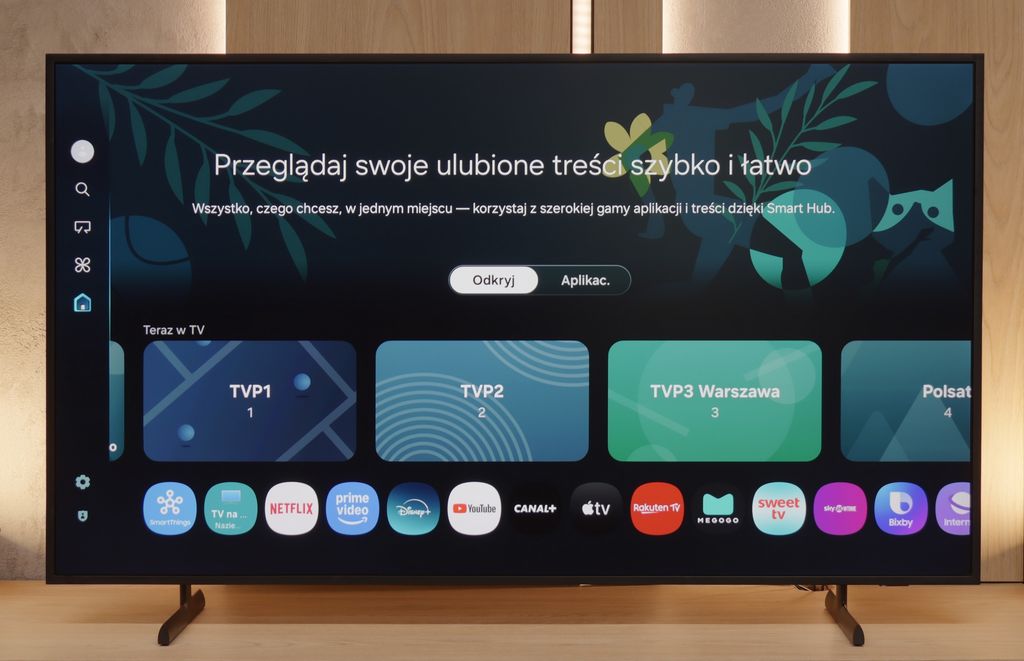
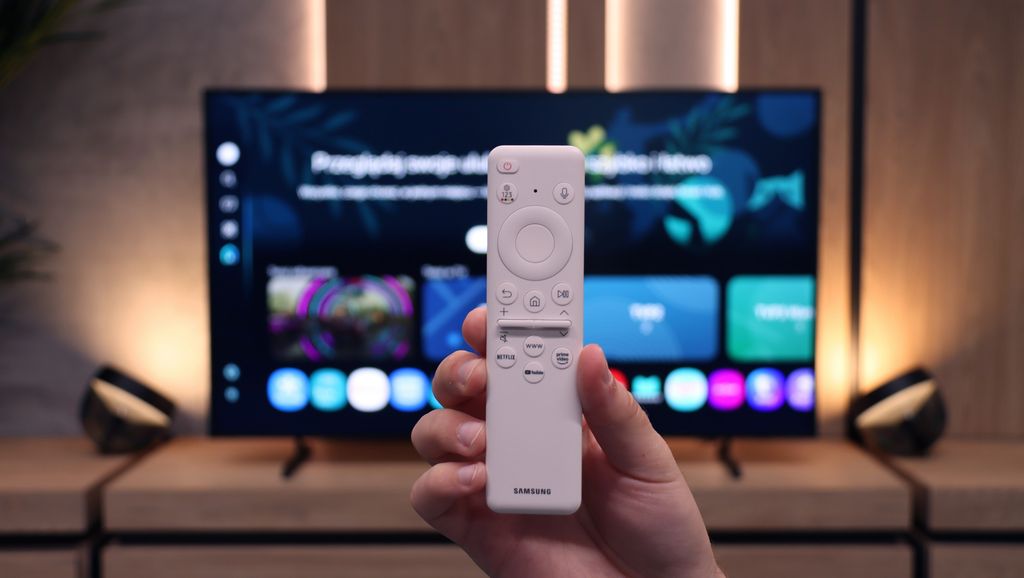
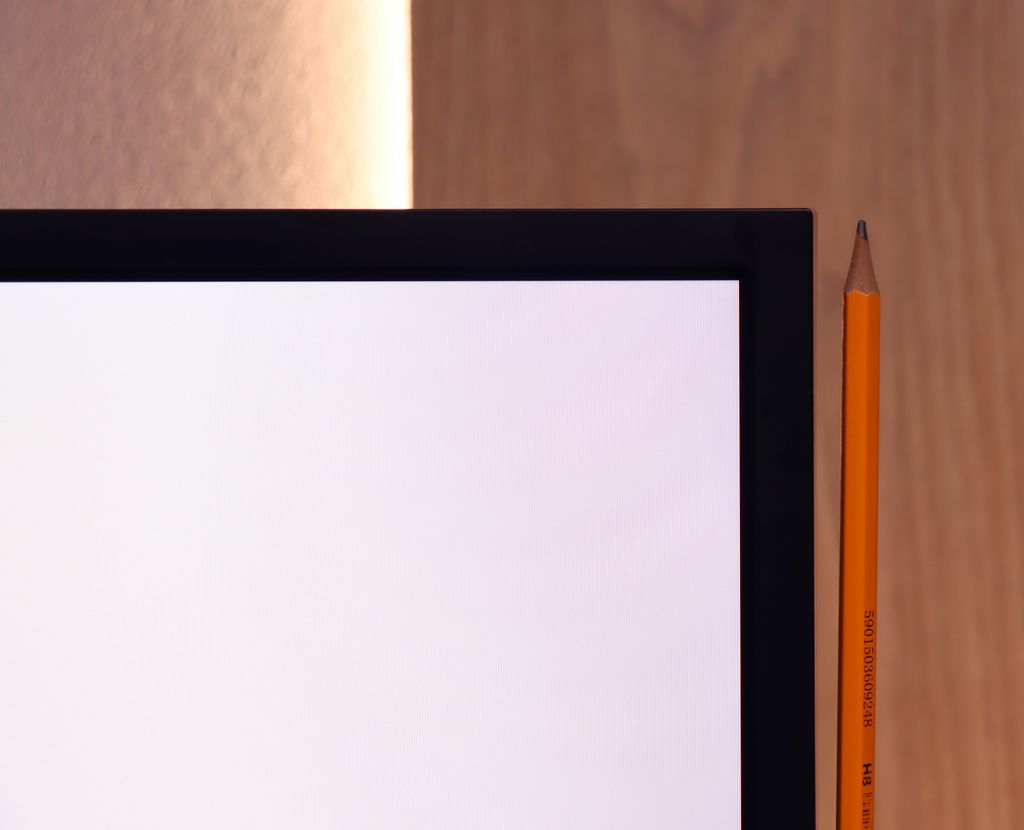
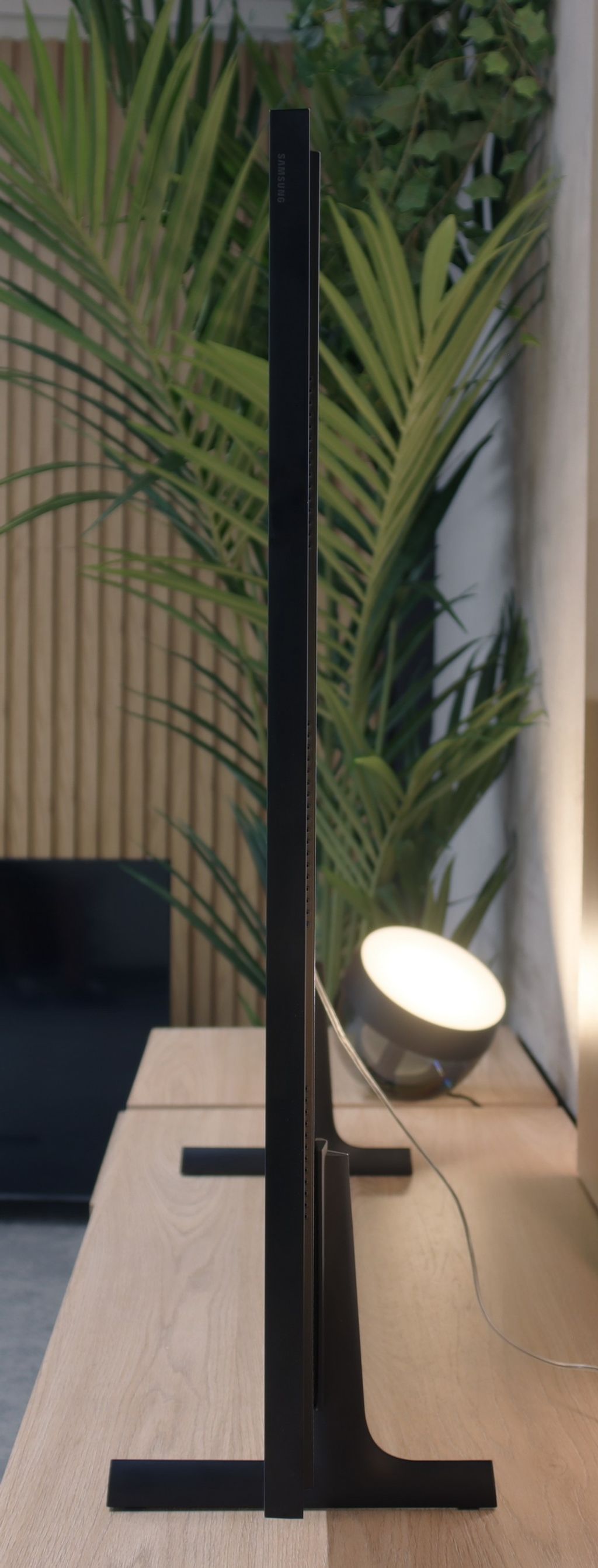
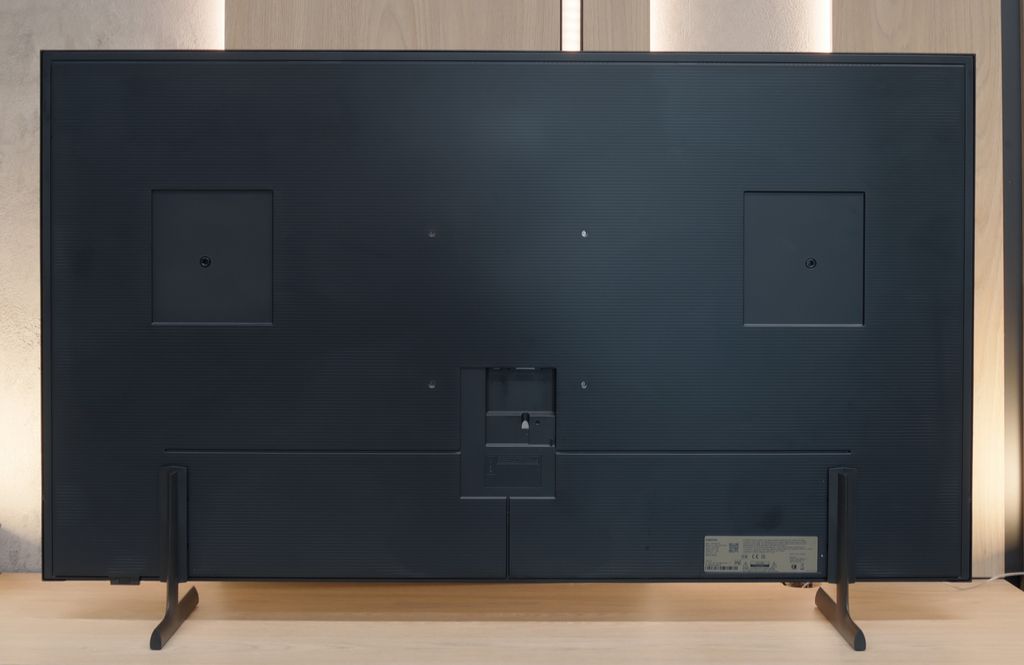
Contrast and black detail
5.5/10
6/10
Local dimming function: No
Local dimming function: No
Contrast:

Result
5,000:1

Result
5,450:1

Result
3,800:1

Result
4,000:1

Result
3,950:1

Result
4,800:1

Result
4,750:1

Result
14,900:1

Result
4,500:1

Result
4,300:1
Halo effect and black detail visibility:

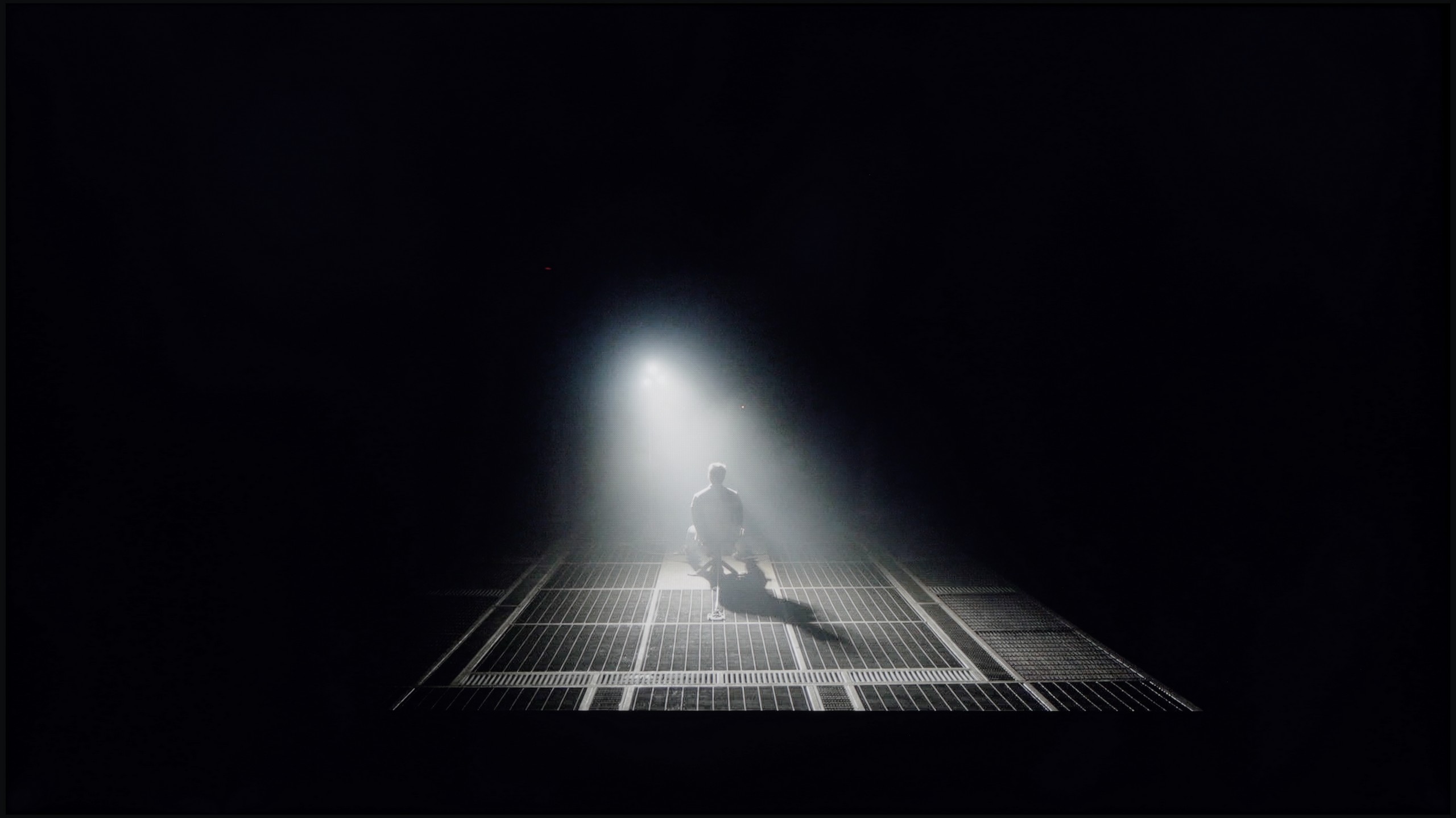
TCL A300, also known as NXTVision, uses a VA panel, so from the outset, decent contrast could be expected. On our test screens, the television indeed showed typical results for this type of panel – in the best case, the contrast reached around 5000:1, which is not a bad result for this segment.
However, it should be noted that the model is not equipped with any local dimming technology, which unfortunately is evident in practice. Black, although at times quite deep, often turns into navy blue or grey – especially in darker scenes. In short: for a television without local dimming, it’s not bad, but it shouldn't be compared to models that already have such a feature on board.
The year 2025 is shaping up to be quite interesting when it comes to lifestyle televisions. Why? Because Samsung has prepared two versions of the iconic model The Frame – one standard and the other with the addition of "Pro". In this review, we take a look at the version without "Pro", which – as we will soon see – makes a significant difference. The standard model LS03F lacks any local dimming technology, unlike its more expensive sibling. This is important as it affects not only the overall picture quality but primarily how this television handles black levels.
The VA panel used in The Frame 2025 has a high native contrast – and this obviously works in its favour. In the tested movie scenes, details in the dark areas of the image were well visible, nothing blended together, and there was no uniform black/light blob. For the average viewer, this will be perfectly sufficient. But of course, not everything is ideal. The lack of local dimming means that the black levels on this television are not perfectly deep – they resemble a dark navy blue rather than pitch black. Additionally, in our tested unit, we noticed slight blooming on the right side of the screen, but this may simply be the "character" of the unit rather than a rule. Theoretically, one could try to improve the perception of black by backlighting the screen – for example, with an LED strip – but in the case of The Frame, that’s rather impossible, as this television is meant to sit flush against the wall like a piece of art. So to achieve better blacks visible to our eyes, we are forced to watch LS03F with the lights on. Such is the charm of this technology.
HDR effect quality
4.9/10
6/10
Luminance measurements in HDR:

Result
357 nit

Result
348 nit

Result
338 nit

Result
350 nit

Result
389 nit

Result
642 nit

Result
589 nit

Result
574 nit

Result
584 nit

Result
631 nit
Scene from the movie “Pan” (about 2800 nits)


Scene from the movie “Billy Lynn” (about 1100 nits)


Static HDR10


Dynamic: Dolby Vision
Dynamic: HDR10+


HDR luminance chart:
Samsung The Frame 2025 (LS03F)
Luminancja HDR
Luminance of RGB colors
TCL A300W NXTVision
Luminancja HDR
Luminance of RGB colors
When it comes to brightness, the TCL A300W is definitely the dimmest TV among all frame-style models, such as Samsung The Frame or Hisense CanvasTV – and unfortunately, you can see that right away. In our measurements, peak luminance reached only around 400 nits, and on test movie screens, this value dropped to 350 nits. That’s definitely too little to feel the real "magic" of bright HDR effects. As a consolation – the TV is equipped with a PFS LED coating (which is something like QLED), which provides very good coverage of a wide colour gamut, both DCI-P3 and BT.2020. In addition, there is full support for all popular HDR formats – HDR10, HDR10+, HLG, and Dolby Vision – which somewhat compensates for the shortcomings in brightness and helps improve the overall experience of materials in this quality.
The Frame LS03F is a television that can surprise with its brightness. The maximum luminance reaches around 650 nits, which already looks solid on paper. But as we know – lab tests are one thing, and real film scenes are quite another story. When watching HDR materials in natural conditions, The Frame 2025 maintains very good results. In most film scenes, peak brightness stayed at around 550–650 nits. This is enough to feel the difference between standard picture and that in HDR quality – bright highlights, reflections on water, or moonlight look distinct and impressive.
It's also worth noting that the LS03F is a QLED television, which translates to solid colour saturation. The coverage of the DCI-P3 colour space reaches about 92%, allowing for vibrant, intense colours in HDR content. It's not at the level of top premium models, but for a lifestyle screen – the result truly deserves recognition.
Factory color reproduction
5.9/10
7.1/10


Factory Mode
After calibration

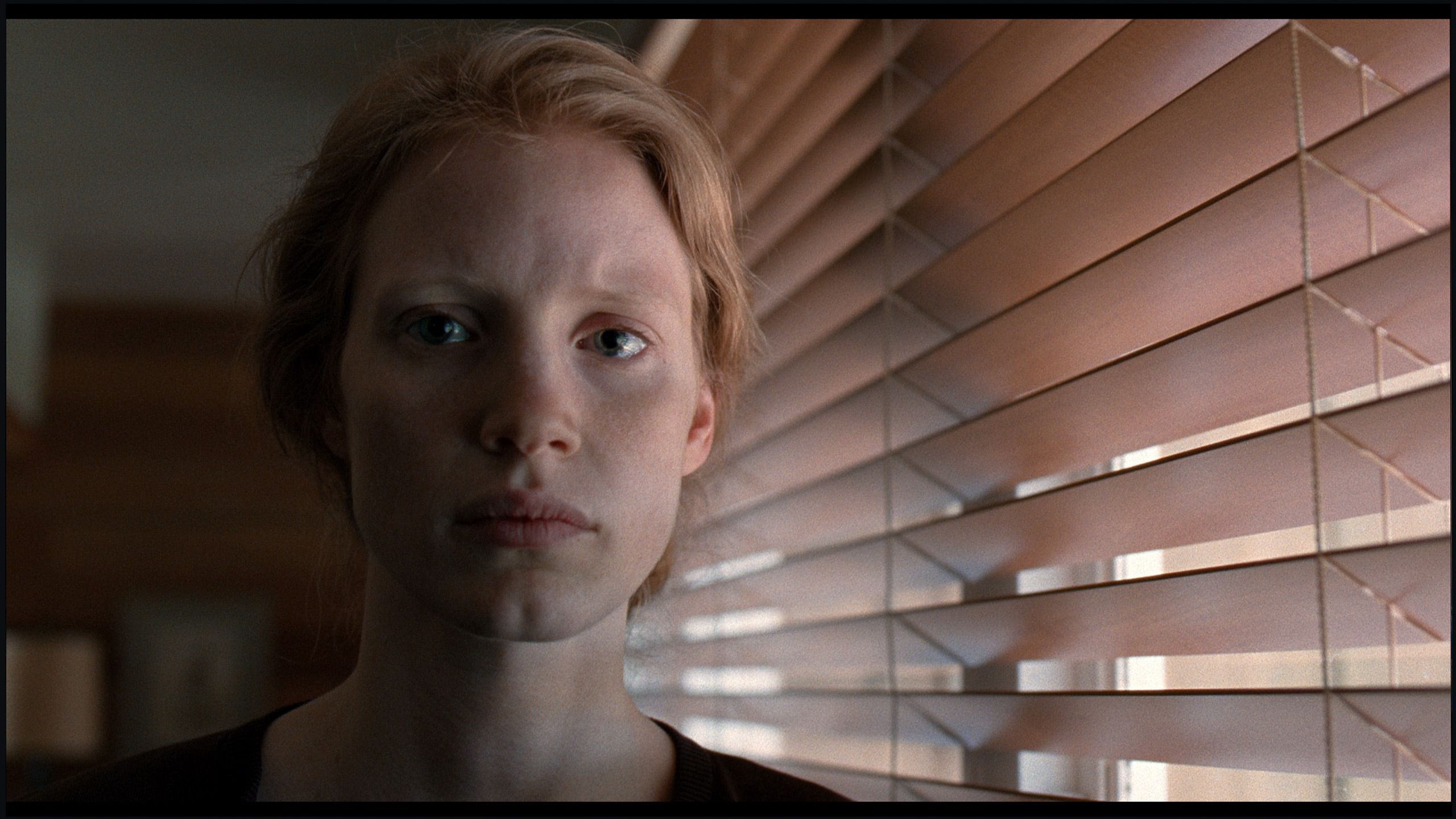
Factory Mode
After calibration
TCL A300 offers several picture modes, but without a doubt, the movie mode performs the best. Unfortunately, even though it is the best option available, it is not free from errors. Both in HD and HDR content, the image has a noticeably too warm hue – it has a slight pink tint, which is particularly noticeable in snowy scenes. Instead of pure white, we get a pinkish coating that spoils the natural perception of colours.
The management of brightness is also lacking. In the case of older HD materials, the image often seems too dark – confirmed by an elevated gamma value. Conversely, with HDR content, the effect is the opposite – the image is overly bright, as we observed in scenes from the film Pan. Such a lack of consistency also affects colour accuracy – a test with a ColorChecker showed that many samples clearly deviate from reference values.
Fortunately, TCL allows for manual adjustment of settings, so we decided to check how the television would perform after our professional calibration. The effects of this adjustment are described below.
When it comes to picture quality right out of the box, even in Filmmaker mode, which is supposed to be the closest to reference, there were some issues. In both HD and 4K HDR content, we noticed clear deviations in white balance. The picture was heavily skewed towards red and blue, giving the screen a distinctive pinkish hue. This effect was most noticeable in bright scenes – for example, in shots with a lot of white, where neutral light should naturally dominate. In such moments, the screen clearly took on pink tones, which is also evident in the attached comparative photo. As for brightness characteristics – it wasn't as bad as one might expect given such colour inaccuracies. Analysis of the gamma curve and EOTF showed a slight brightening of the image compared to the reference, but not enough to drastically spoil the viewing experience.
Color reproduction after calibration
8/10
8/10




After our professional calibration, the TCL A300 has literally been given a new lease on life. The image has stopped being too warm, and the colours finally look as they should – as confirmed by the ColorChecker test, where the colour samples finally started hitting their marks, at least to some reasonable degree. It was also possible to partially correct the brightness management – the image is now more balanced and less "wobbly" between different types of content. Of course, certain limitations can't be bypassed – a slightly visible blooming effect still occurs, but that's a characteristic of the technology, not something that can be eliminated even after professional settings.
Generally: after calibration, the A300 looks significantly better and gains a whole new quality.
After calibration, the movie mode gained a completely new quality. The issue of the pink tint, which was previously clearly visible, especially in bright scenes, has been effectively eliminated. Colours started to look significantly more natural, and the white balance no longer dominated the rest of the image. It was no longer the same oversaturated "picture from a box" – everything took on coherence and a cinematic character. Additionally, the tendency of the TV to slightly brighten scenes, previously visible in the EOTF curve analysis, has been partially corrected. Of course, within the limits of what the design allows without local dimming – it's difficult to speak of perfect brightness management here. Nevertheless, the final effect was definitely closer to what one might expect from a mode named Filmmaker.
Smoothness of tonal transitions
8.6/10
9/10










TCL A300 NXTVision is another frame-style television that really manages well with the smoothness of tonal transitions. It's hard to find distinct bands or sharp transitions between shades of one colour – it all looks natural and smooth.
However, it's fair to say that among the three tested models (The Frame and S7NQ), TCL performs the weakest in this category. In darker and lighter scenes, you can notice slight imperfections. Nevertheless, looking at it as a whole, for a television in this range – it really presents itself solidly. It might not be the best of the bunch, but it holds a very good standard.
In terms of the smoothness of tonal transitions, the LS03F maintains a high standard – just like last year's models. The television didn’t have any issues during testing of more challenging film scenes, where visible transitions between shades can easily occur. The colour gradation performs very well here – both in lighter and darker parts of the image. We did not observe the typical banding effect or any other disturbances that could be noticeable while watching films. If we were to nitpick, in the most demanding scenes – with subtle transitions and delicate gradients – minor imperfections can be seen. But only if you get really close to the screen and start analysing the image from an unintended distance.
Image scaling and smoothness of tonal transitions
5.5/10
6.7/10
Smooth transition function


Image without overscan on the SD signal

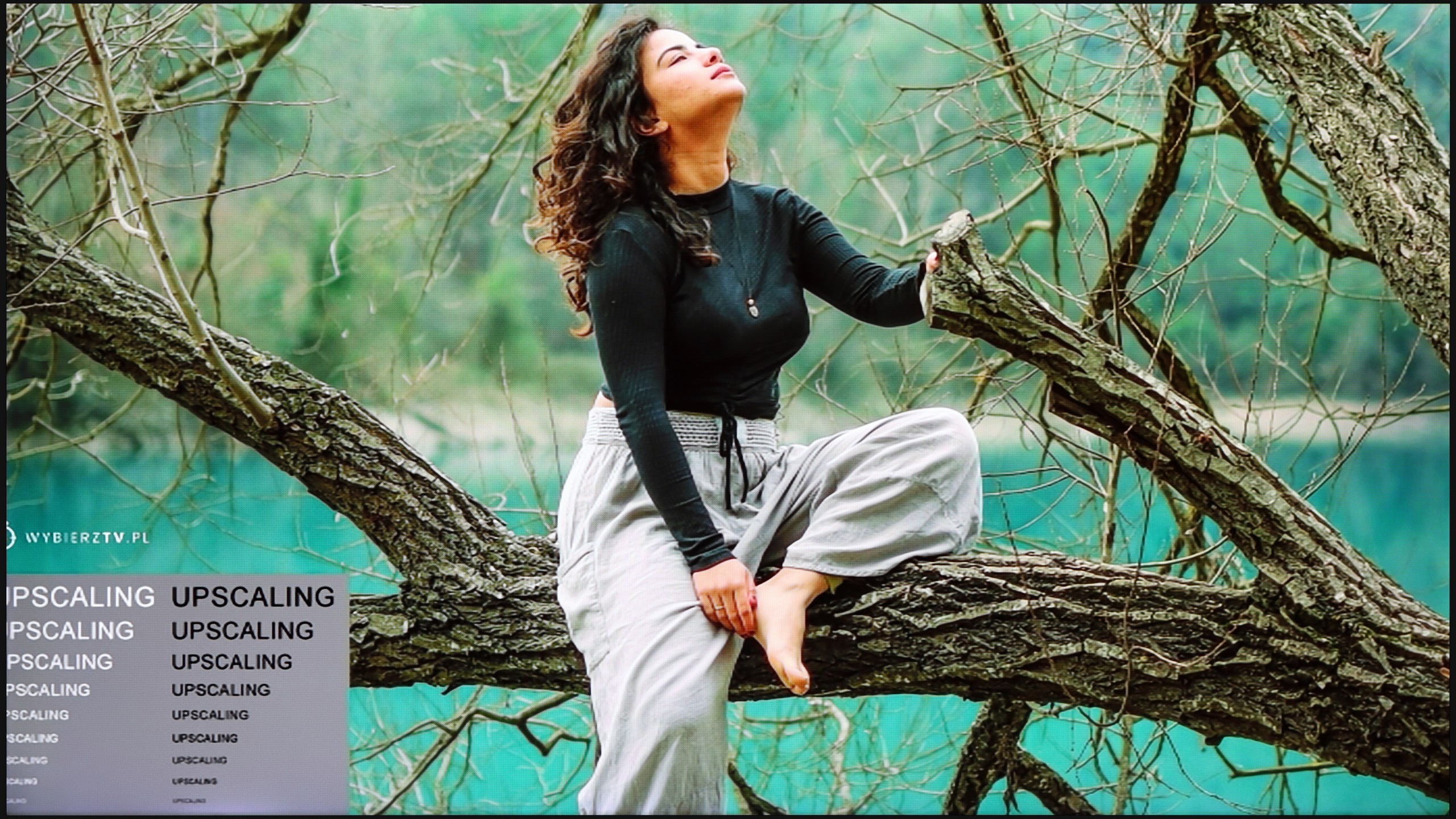
TCL A300 handles tonal transitions in high-quality films very well, but the question arises – how does it perform with weaker materials? The TV is equipped with a tonal smoothing feature; however, its effectiveness can be described in one word: “random”. In one scene, it may work and improve the gradation, but when turned off… the effect remains the same. There is a lack of consistency and predictability here.
Image scaling is also not one of A300's strong points. On the test pattern, the main character actually looked better than on the raw signal, but with thin lines – like fonts or background details – there was noticeable jaggedness and aliasing. On the plus side, the TV does not cut off the image and has no issues with overscan, but the overall quality of scaling is rather average.
LS03F is equipped with an NQ4 processor, which is responsible for improving image quality – especially in lower-quality materials. In practice, it works surprisingly well, particularly when it comes to older content and recordings with lower resolution. Activating the "noise reduction" feature delivers noticeable results. The television effectively smooths tonal transitions and removes digital noise that can appear in darker areas of the image. Compared to previous generations, there is a clear improvement – earlier, this feature often smoothed everything too much, including details that it shouldn't have removed. In this year’s model, the smoothing still occurs, but it happens in a much more acceptable way. Textures of materials, skin, or fabric details are not as heavily muted as before – the image retains more naturalness. However, this does not change the fact that film grain is still removed by the television, which may not appeal to everyone. On the other hand, it's no longer such an aggressive intervention as in previous models. It's also worth mentioning that the LS03F may struggle with very weak signals – for example, from VHS tapes or low-resolution video. In such cases, we noticed slight clipping of the image at the edges – the so-called overscan. This can lead to situations where a small part of the image (e.g., subtitles at the bottom edge) gets cut off.
Blur and motion smoothness
6.4/10
6.9/10

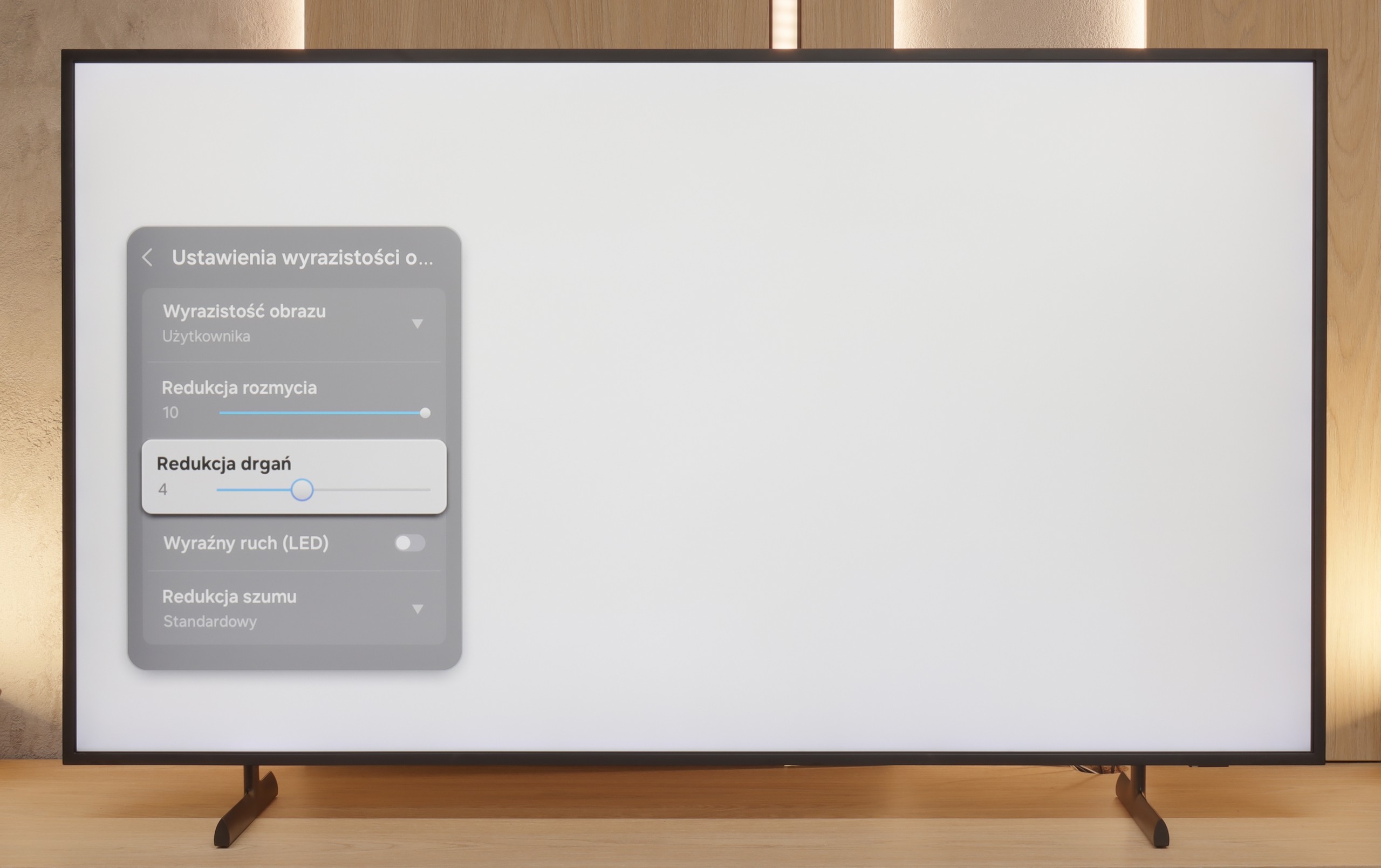
Blur (native resolution, maximum refresh rate):






Blur (BFI function enabled):
Image flickers in this mode



TCL A300 is equipped with a 144 Hz panel, which should instantly satisfy virtually everyone - both gamers and sports fans. Motion is fluid and the image is clear even during fast scenes. Additionally, the television offers a motion enhancement feature called "Motion," where we find two sliders on a 10-point scale. These allow you to adjust the effect to your own preferences - from a classic, filmic look with visible frames to a very smooth (though already unnatural) image reminiscent of a soap opera effect. This way, everyone can find a setting that suits them.
The new feature in The Frame for 2025 is a 144 Hz refresh rate display. Yes – in a television primarily associated with displaying works of art, you can now not only watch Van Gogh, but also comfortably play on a console or follow fast-paced sporting events. This is a significant step towards greater versatility. In the case of Samsung movies, as usual in models with a 120 Hz display and above, it allows you to adjust motion fluidity according to your preferences. You can set a more cinematic reproduction that maintains frame rate or opt for complete image smoothing. The range of options is broad, allowing you to tailor the effect to your tastes – regardless of whether the screening is meant to look like classic cinema or a performance on a modern theatre panel.
*this part of the test refers to the model LS03FAU in sizes 55 and 65 inches, which is equipped with a 144Hz display; the sizes 43 and 50 inches have 60Hz displays, and consequently perform much worse in terms of motion fluidity.
Console compatibility and gaming features
9.8/10
8.1/10
- ALLM
- VRR
- VRR range48 - 144Hz48 - 144Hz
- Dolby Vision Game Mode
- Correct implementation of HGIG
- 1080p@120Hz
- 1440p@120Hz
- 4K@120Hz
- Game bar

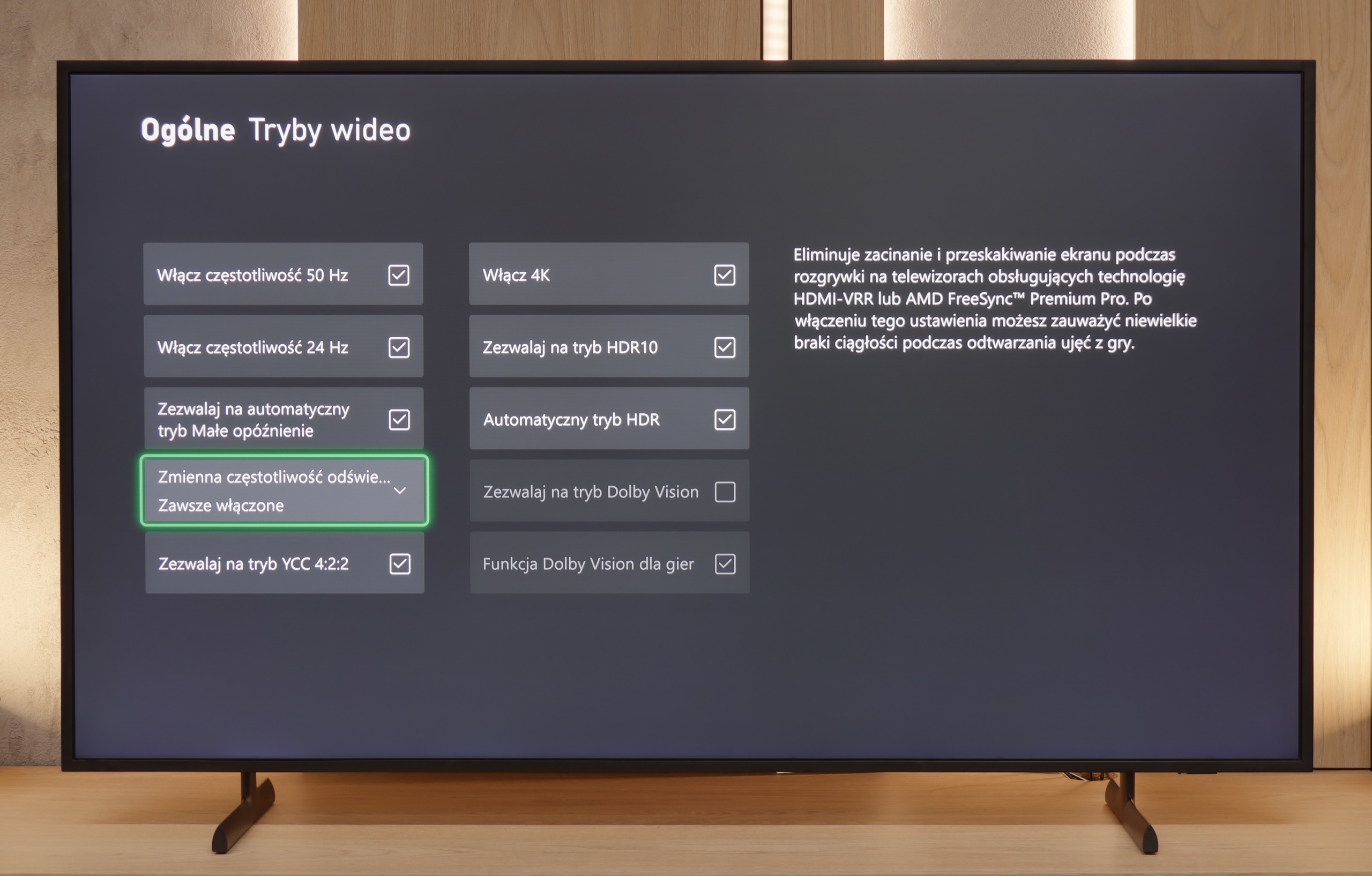

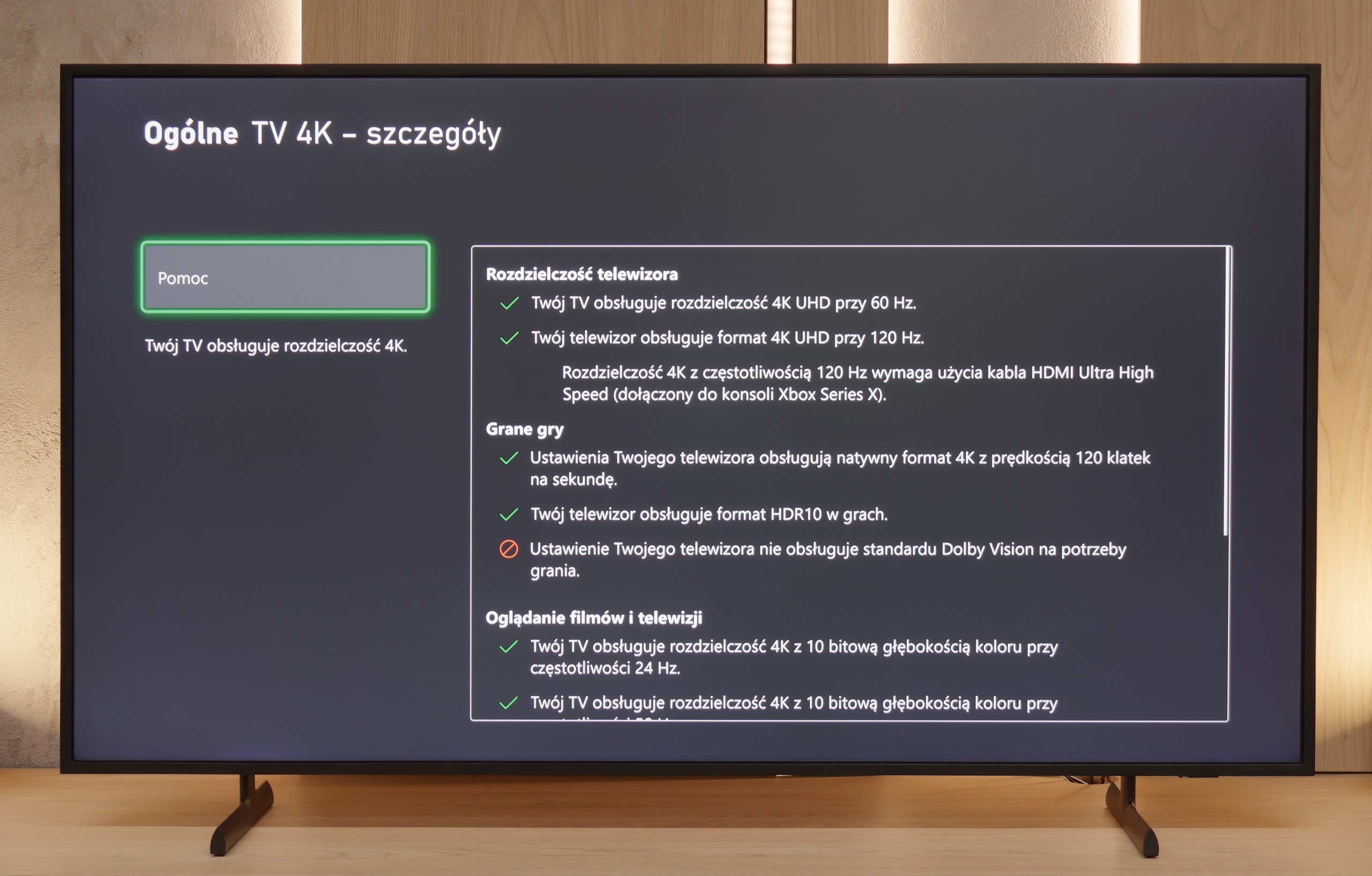



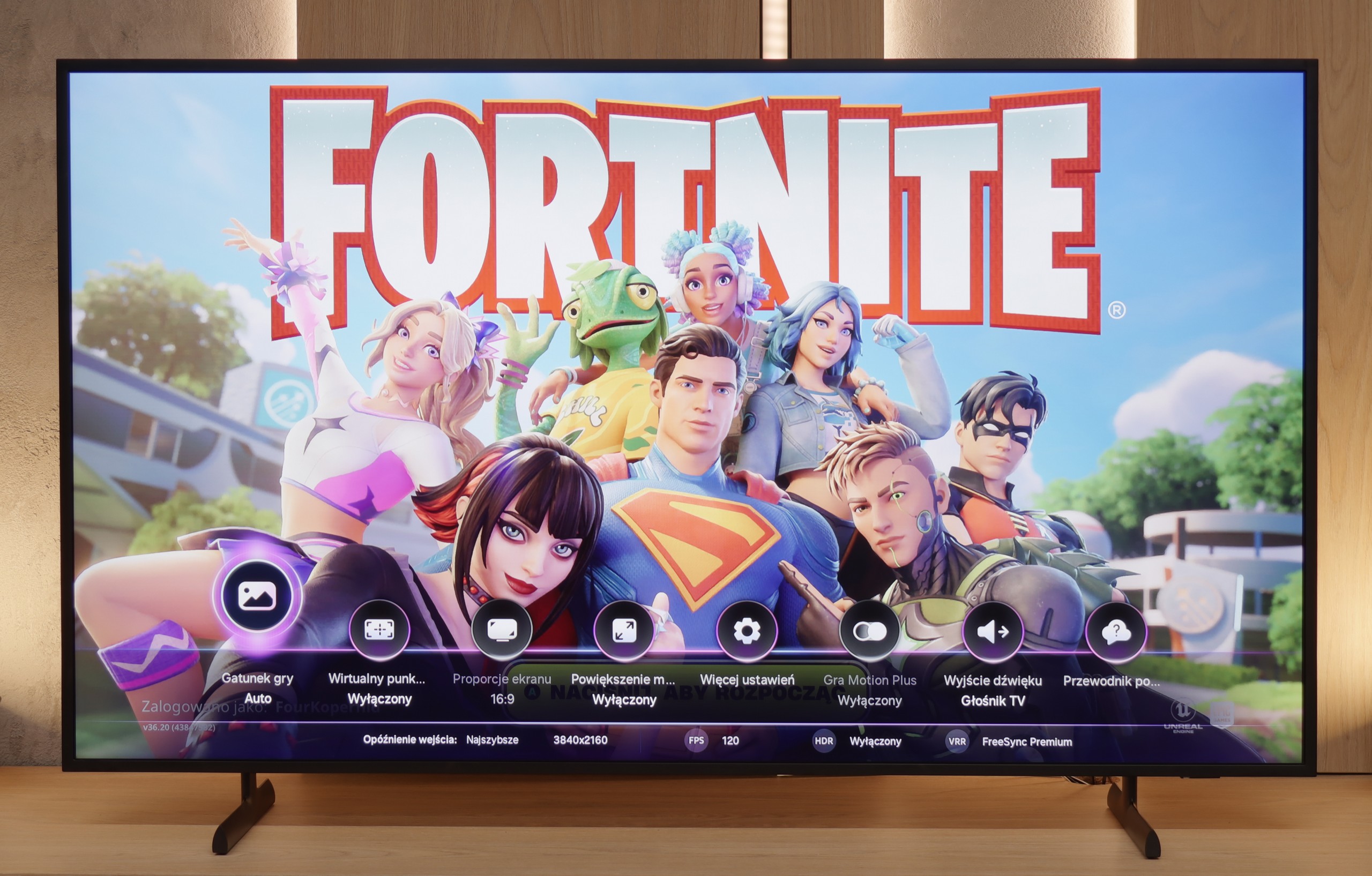
The TCL A300 is a television designed not only to transport us to a digital art museum but also into the full-fledged world of gaming. It offers practically everything you can expect from gaming hardware: two full-bandwidth HDMI 2.1 ports, 144 Hz refresh rate, support for VRR and ALLM.
It also deserves credit for the proper implementation of the HGIG mode – something that competing Hisense sometimes struggles with. The television handles lower resolutions (e.g., Full HD) with ease while maintaining high refresh rates, which will be appreciated by owners of older consoles or PCs.
Additionally, there's an attractive and clear GameBar that facilitates quick access to settings for gamers. The A300 is indeed well-prepared for gaming at the highest level – it’s just a shame that issues with ghosting somewhat detract from its overall appeal as a gaming device.
As we mentioned earlier – although The Frame likely displays images and artwork for most of the time, Samsung recognised that a Van Gogh fan could just as easily be an avid gamer. And it must be said that The Frame 2025 has almost everything to become a fully-fledged gaming TV.
Onboard, we find support for ALLM (Auto Low Latency Mode) and Variable Refresh Rate (VRR) thanks to the implementation of a single HDMI 2.1 port. The TV handles lower resolutions at higher refresh rates effortlessly and features an expanded Game Bar – already known from other Samsung models – which allows for quick preview and adjustment of key gaming-related settings. For this, it gets extra points from us. Noteworthy is also the proprietary motion smoother, Auto Motion Plus Game, which – and this is worth emphasising – works without increasing input lag. Samsung remains the only manufacturer that has managed to implement this feature in a practically unnoticeable way regarding delays. The result? Much better fluidity in games, especially those that struggle to maintain a stable 60 frames. This solution can genuinely improve gaming comfort in more demanding titles – particularly on consoles that don’t always manage full fluidity, especially in AAA games.
As for the downsides – the lack of Dolby Vision is already something we consider standard in Samsung TVs, so there’s not much to specifically nitpick here. However, the problem lies elsewhere. In the latest version of the Tizen system, the HGiG option has disappeared. Literally – it’s gone. This is a significant inconvenience when configuring the console for proper HDR content display in games. It's hard to understand why such a decision was made, but one thing is certain – this needs to be fixed as soon as possible. We’re talking about a brand that has set standards for gaming on TVs for years. If HGiG returns – and we hope it does – The Frame LS03F can confidently aspire to be a proper gaming TV. Not only as a decoration on the wall, but as equipment that truly enhances the gaming experience.
Input lag
9.7/10
10/10
SDR
HDR
Dolby Vision
In terms of input lag, the TCL A300 performs really well. Values below 10 ms at a refresh rate of 120 Hz are something many gamers dream of – such low lag is practically unnoticeable, both during everyday gaming and in more demanding esports titles. One could nitpick about the result of 23 ms in Dolby Vision mode at 60 frames, but it's still low enough that serious objections are hard to come by. In this category, the A300 truly excels.
When it comes to input lag, Samsung maintains a very high standard. The LS03F, like most of this year's models from the brand, achieves a score of 8 ms for 4K content, which is practically a benchmark value. This result allows you to play even the most dynamic titles without delays and with complete responsiveness. Well done!
Compatibility with PC
8.2/10
8.2/10


If we plan to use the TCL A300 as a computer monitor, we may be pleasantly surprised. The television performs really well in this role. It is equipped with a 144 Hz panel, supports G-Sync, and, as we mentioned, offers very low input lag, so gaming on it with a connected PC is pure enjoyment.
Working with text is also possible, although with some limitations. The TCL A300 has slight issues displaying dark fonts and thin lines – this is due to the construction of the subpixels, which in everyday use can be a bit annoying, even though it looks better in photos than in reality.
The television supports chroma 4:4:4, but only up to 120 Hz. Therefore, we noted that this feature is available, but with a limitation – if we care about perfectly readable fonts, it's worth sticking with the refresh rate of 120 Hz. At 144 Hz, the clarity of the text may suffer somewhat.
Collaboration of The Frame 2025 with a computer poses no major issues. Let's start with gaming, as this is where this model shows its strengths – support for 144 Hz signal, low input lag, and compatibility with G-Sync technology (for NVIDIA cards) make it hard not to consider it a full-fledged gaming monitor. It’s one of the more interesting "gaming with PC" televisions available on the market in this class.
When it comes to everyday work, the situation looks just as good. The Frame easily handles chroma 4:4:4, which translates to good font readability and overall user comfort. We only noticed slight issues with dimming very thin lines and dark details on a light background – this effect may occur, particularly when working with small interface elements. In practice, however, with a 55-inch screen and standard office working distances, it will be hard to realistically notice this problem. Nonetheless, it's worth keeping this in mind if the television is to serve as a monitor not only for entertainment but also for precise graphic or text work.
Viewing angles
3.2/10
3.5/10
The viewing angles on the TCL A300 NXTVision are, let’s be honest, average. The TV is equipped with a VA panel, which inherently has quite limited angles, and unfortunately, this is evident here. The video below speaks for itself – even a slight deviation from the centre results in a noticeable drop in contrast and colour saturation. It’s a shame that this is yet another frame-style TV that has done absolutely nothing about it. After all, we don't always have the option to sit perfectly straight on – especially if the device is also meant to serve a decorative function in the living room.
As one could expect from a VA panel, the viewing angles on The Frame 2025 are at best mediocre. The image loses saturation and contrast when viewed off-axis. It's a shame, because we're talking about a model that displays digital artworks in standby mode – and it's precisely in such moments that wide viewing angles would make the most sense, enhancing the feeling of interacting with a real piece of art rather than just its screen imitation.
Perhaps in the future, manufacturers will decide to introduce special coatings or modified versions of VA panels that improve this aspect – as it would have real significance not only in terms of functionality but also aesthetics for lifestyle televisions.
TV efficiency during daytime
4.7/10
6.3/10

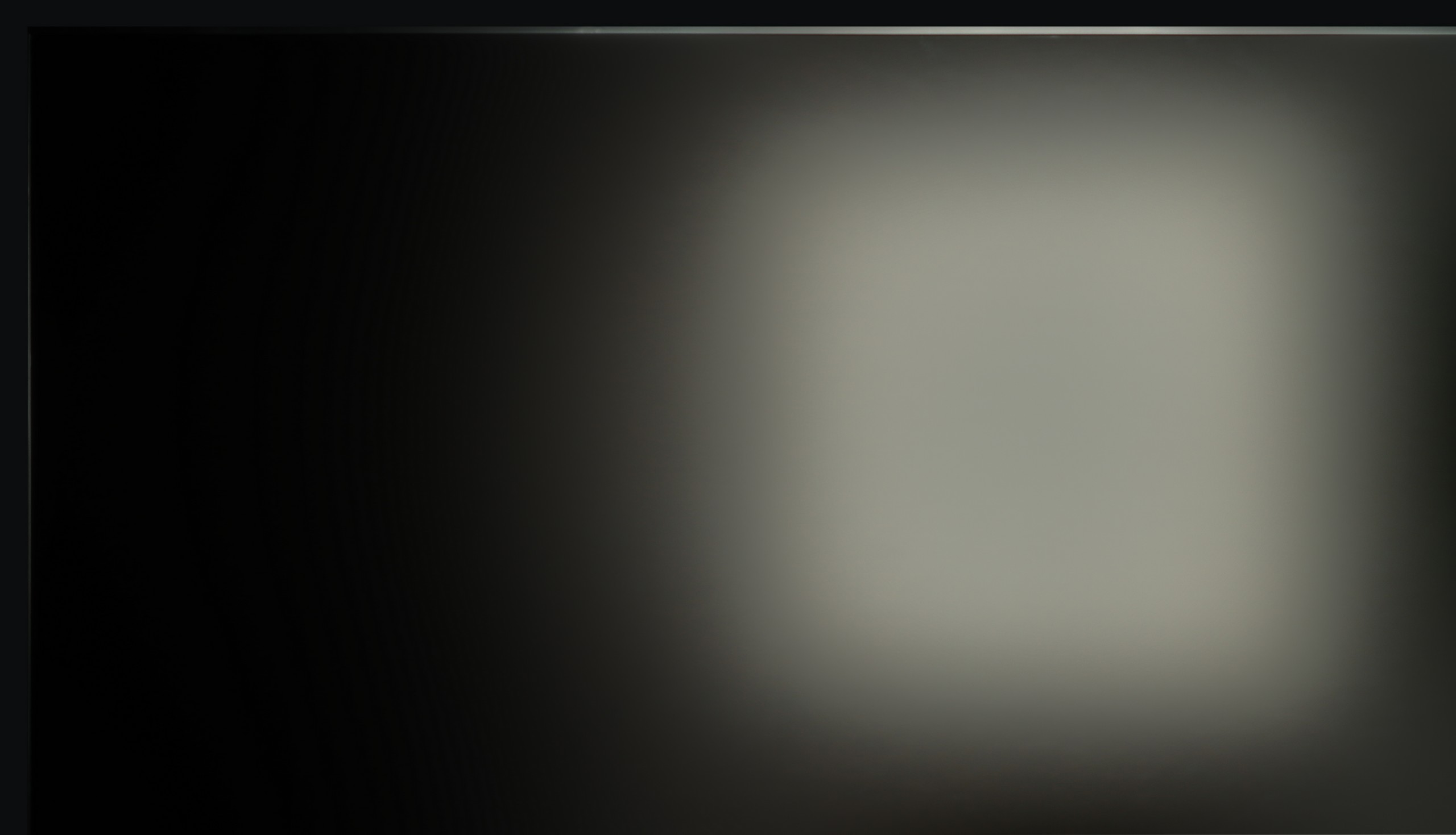


Matrix brightness
Average luminance SDR
Samsung The Frame 2025 (LS03F): 596 cd/m2
TCL A300W NXTVision: 388 cd/m2
The TCL A300 NXTVision is equipped with a matte panel very similar to the one found in one of its Chinese competitors – the Hisense S7NQ. This type of surface does quite well in reducing reflections, although it must be admitted that it performs worse than Samsung's The Frame, which offers a significantly higher level in this regard. As is usually the case with matte displays, blacks during the day lose depth and appear more grey than black – and this is no different here. Unfortunately, the fact that the A300 is the darkest TV of the three tested doesn’t help either. This gives it a real problem in breaking through in heavily sunlit rooms.
One of the most distinctive features of The Frame is its matte display – and it must be said that Samsung has really perfected this aspect. From our experience, it's one of the best solutions for reducing reflections, especially direct ones. If reflections on the screen can be irritating, it will be hard to find a better screen in this budget than the matte panel used in Samsung TVs. Of course, this comes with a certain compromise. In very bright sunlight, colours may appear slightly faded, and the image loses a bit of depth. However, this is something we consciously accept when opting for a matte screen – you win some, you lose some. In practice, the colours and contrast on Samsung's matte screen still outperform those on Chinese models such as TCL NXT Vision or Hisense Canvas TV. If effective reduction of reflections is a priority and you want to use the TV also as a “digital artwork” in bright rooms, it’s hard to make a better choice.
The Frame achieves around 600 nits of brightness, which, combined with the matte coating, ensures that the TV performs well in well-lit daytime conditions. It may not be at the level of flagship models, but in everyday use – in a living room with plenty of light – it handles it without any problems.
Details about the matrix
Subpixel Structure:
Panel uniformity:

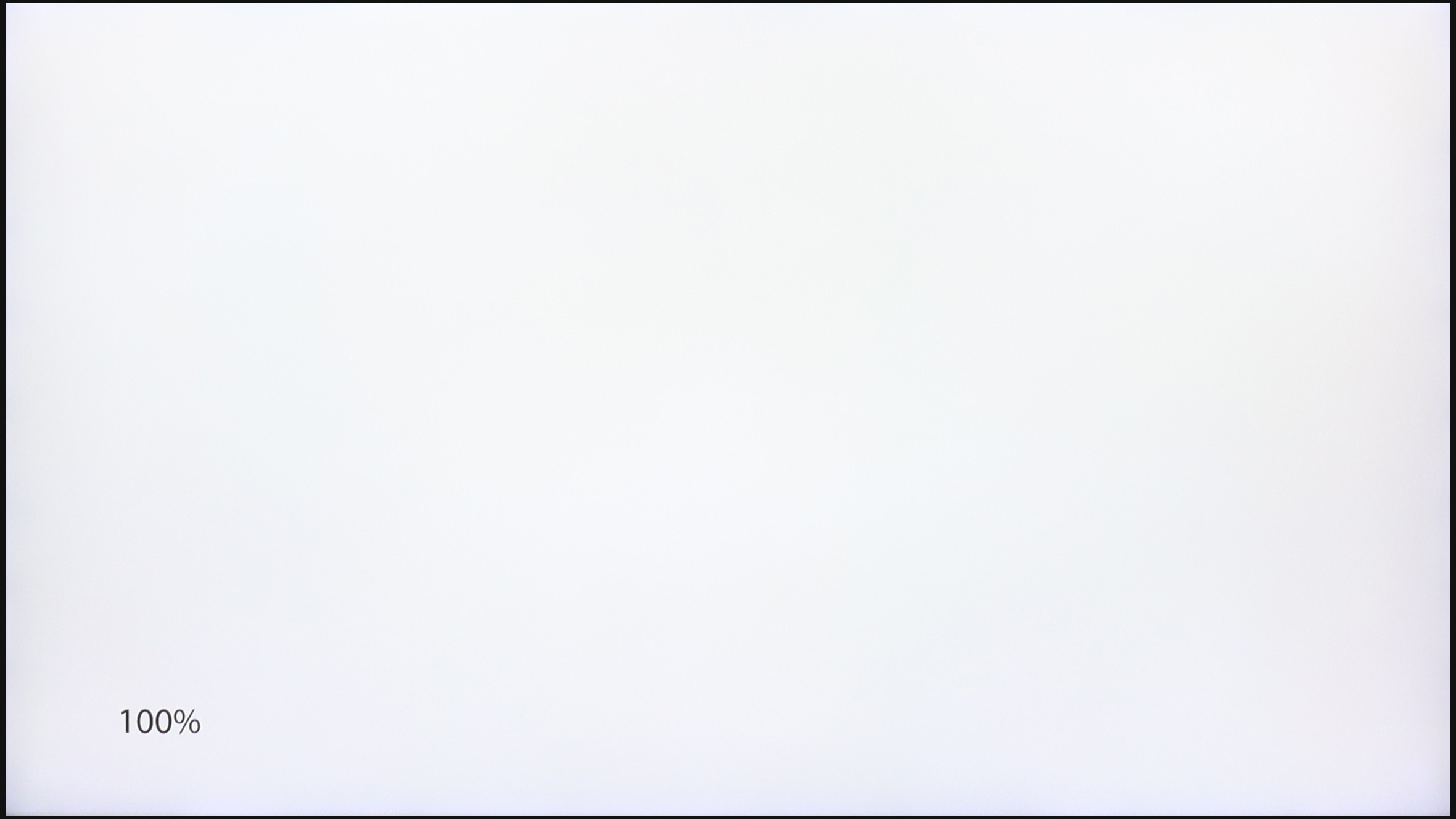
TCL A300W NXTVision
Samsung The Frame 2025 (LS03F)
TV features
7.7/10
8.1/10
- HDMI inputs2 x HDMI 2.0, 2 x HDMI 2.1 48Gbps3 x HDMI 2.0, 1 x HDMI 2.1 40Gbps
- OutputsToslink (Optical audio), eARC (HDMI), ARC (HDMI)Toslink (Optical audio), eARC (HDMI), ARC (HDMI)
- Network InterfacesWi-Fi 2.4GHz, Wi-Fi 5GHz, Ethernet (LAN) 100MbpsWi-Fi 2.4GHz, Wi-Fi 5GHz
- TV receptionDVB-T, DVB-T2, DVB-S, DVB-S2, DVB-CDVB-T, DVB-T2, DVB-S, DVB-S2, DVB-C
Classic features:
- Recording to USB (terrestrial TV)
- Recording programming
- Picture in Picture (PiP)
- RF remote control (no need to aim at the screen)
- Backlit remote control
- Teletext
- Audio only mode
- Possibility to connect Bluetooth headphones to the TV
- Possibility to simultaneously use Bluetooth headphones and the TV speaker
Smart features:
- AirPlay
- Screen mirroring (Windows Miracast)
- Wyszukiwanie głosowe
- Voice search in native language
- Ability to connect a keyboard and mouse




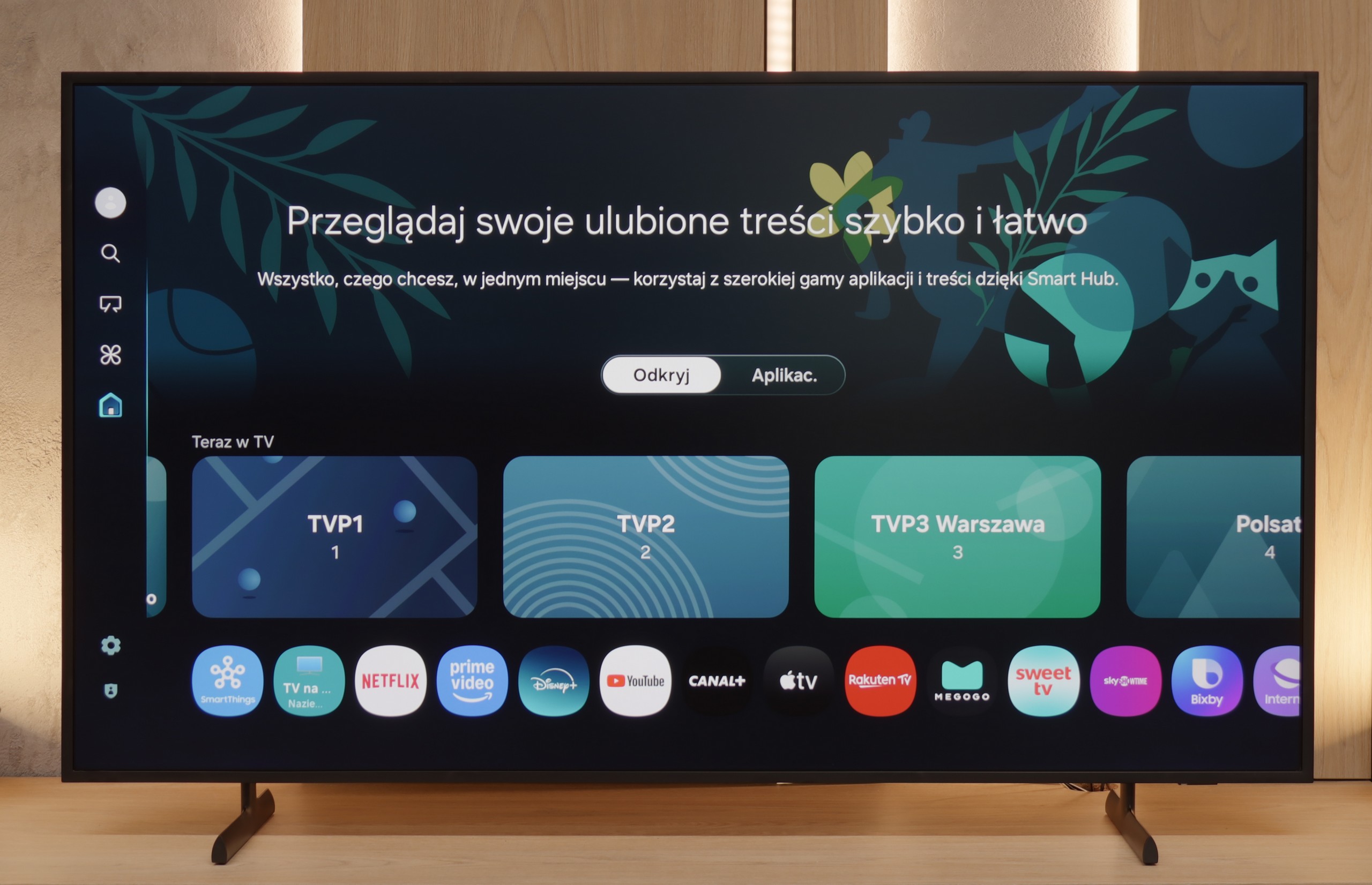
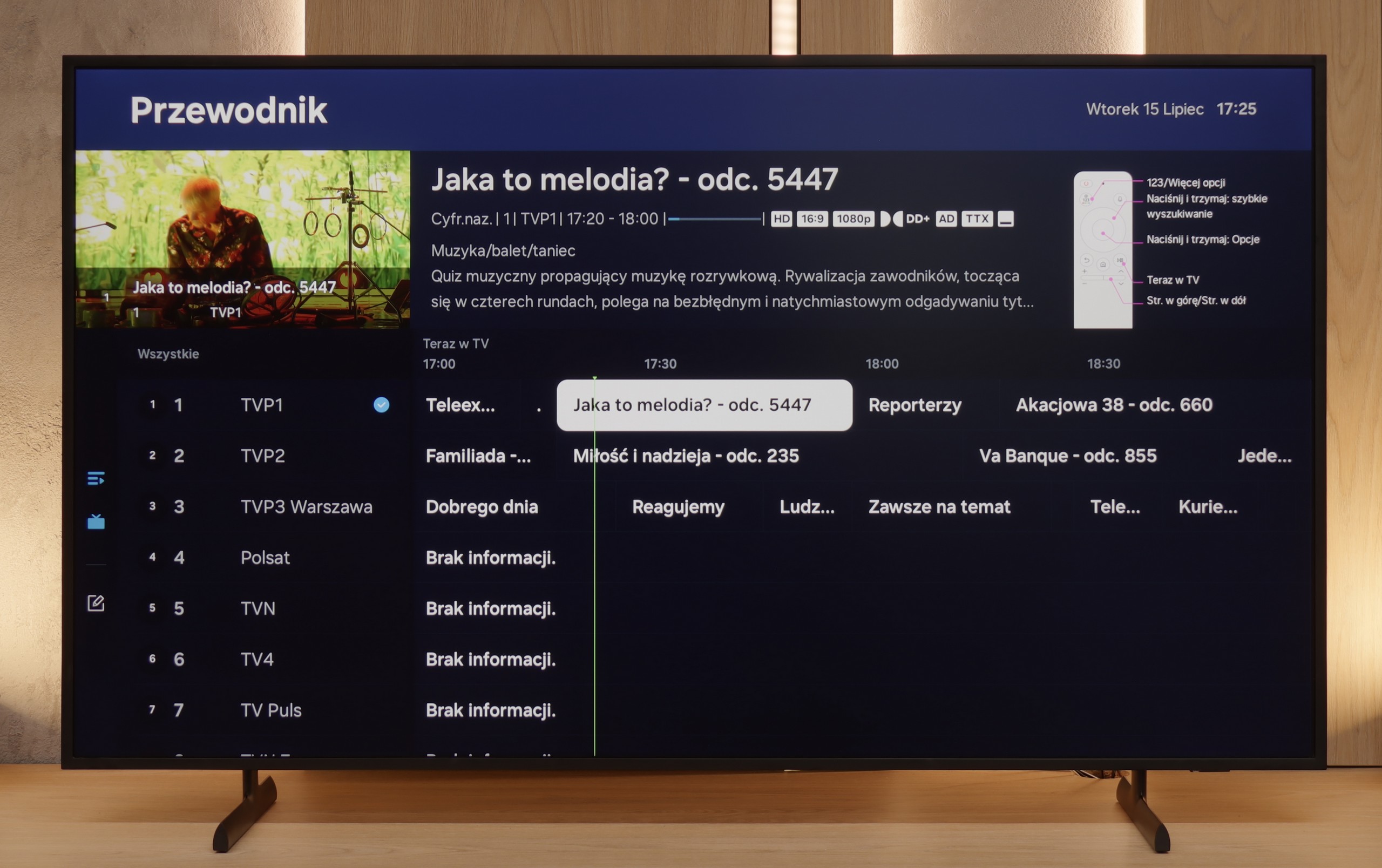

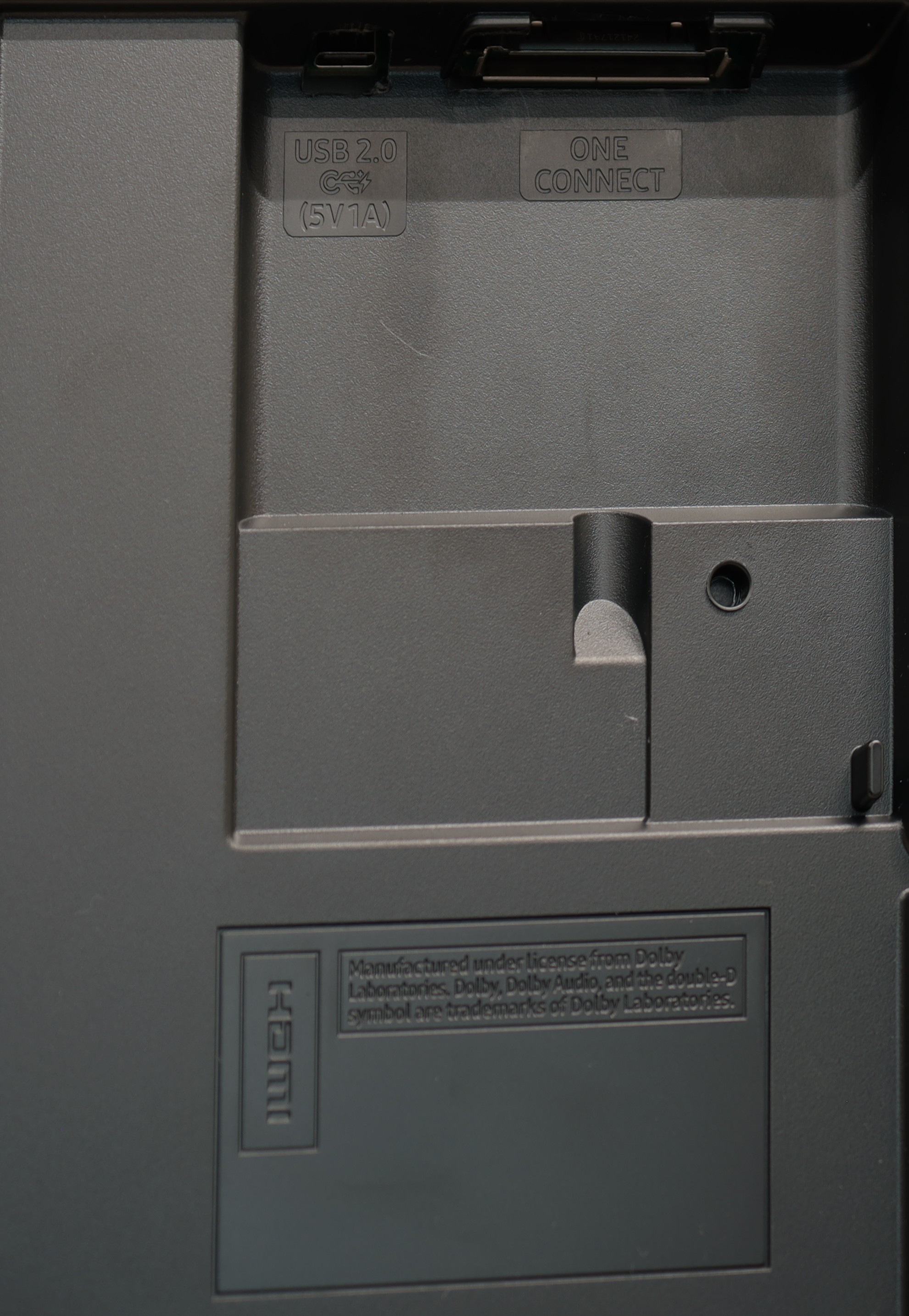
TCL A300 is a television styled as a painting, which in everyday use can successfully pretend to be a work of art hanging on the wall. It is equipped with a special image display mode, additional frames in a light wood tone, and a flat wall mount that allows you to hang the television like a real painting – without any gap from the wall.
A significant advantage of the image mode is that it is completely free. We have access to several dozen works from which we can choose one to be displayed while in standby – instead of a black screen, the image we selected remains on the wall. The quality of graphic reproduction is okay, but it must be admitted that it clearly falls short of that from Samsung's ART Store. Although access to images there is paid, the quality of the scans is significantly better – you can see the texture of the paint, canvas, and details. In the TCL A300, it resembles high-quality photos rather than realistic reproductions of artworks. Additionally, the implementation of the image mode in the system leaves a lot to be desired. For example – if we set the brightness to 10% in image mode, that same value automatically transfers to the regular viewing mode, where we could easily set the brightness to 50% or even 100%. It also works the other way around – when we set the brightness to 100% in regular mode, after switching to gallery mode, the images are displayed with the same maximum brightness, shining too intensely and losing the whole effect of a “picture on the wall.” These are minor but irritating errors that can spoil the experience of what was supposed to be visually subtle and elegant.
Moving on to more classic functions – the A300 runs on the Google TV system, which currently offers by far the largest selection of applications (full list available below). The responsive voice assistant with support for the Polish language also deserves a big plus. As standard – as with most TCL televisions – the USB recording function or picture-in-picture (PiP) mode was missing.
Classic TV Features
In terms of classic features, The Frame doesn’t stand out in any significant way compared to its competitors. There’s no option for USB recording or PiP (picture in picture), which may be disappointing for some users. On the other hand, the TV allows simultaneous use of speakers and headphones, which can be useful – especially for older users. The EPG, or electronic programme guide, is quite readable, and despite the absence of traditional buttons on the remote, we managed to launch even the teletext. In everyday use, the basic functions work smoothly and without major complaints.
Smart System – Tizen and Apps
The Frame 2025 runs on the Tizen system, which has been regarded as one of the most refined Smart TV solutions on the market for years. It’s a system designed for devices that are more than just a television – and it has been designed with this spirit in mind. Tizen offers full integration with external devices – supporting both Apple AirPlay and Miracast. Thanks to the SmartThings app, it’s possible to control not only the television but also other devices within the smart home framework. Since last year, Samsung has also been developing its own voice assistant with support for the Polish language, which significantly facilitates operation. However, the greatest strength of the Smart system in The Frame remains the Art Gallery app. Although access to it is paid (via subscription), it offers the best art scans on the market – we’re talking about scans, not just ordinary photos. This makes the effect of a digital painting hanging on the wall appear significantly better than in any other lifestyle TV.
Playing files from USB
8.9/10
8.5/10
Supported photo formats:
Maximum photo resolution:


The built-in player on the TCL A300 works as it should – most popular video and photo files play without any problems. It lacks support for Apple's HEIC format (which is quite common in many TVs), but most users still use AirPlay, so it shouldn't be a major issue. If someone isn't satisfied with the default player, the Google TV system offers plenty of options – you can easily install an alternative app that better suits your tastes. Nevertheless, it's worth noting that the factory solution is completely sufficient for everyday use.
During testing, we didn't notice any major issues with playing files from a USB memory stick. The television handled both video materials and photos well. Of course, there are some exceptions – for example, the lack of support for the HEIC format (used by Apple devices) – but it's hard to consider this surprising. On the positive side, it fully supports high-resolution photos – the television displays high megapixel files without any problems, which can be significant for those wanting to treat The Frame as a digital photo frame as well. However, during testing, we noticed a limitation regarding subtitles – the television only correctly handled files in .txt format. It's worth keeping this in mind and ensuring that downloaded subtitles for films are saved in this format; otherwise, they may simply not display.
Apps
9.6/10
8.7/10














































Sound
6/10
6/10
- Subjective sound quality:6/106/10
- Dolby Digital Plus 7.1:
- Dolby True HD 7.1:
- Dolby Atmos in Dolby Digital Plus (JOC):
- Dolby Atmos in Dolby True HD:
- DTS:X in DTS-HD MA:
- DTS-HD Master Audio:
When it comes to sound, the TCL A300W – like its competitors – sounds quite... flat, after all, we are talking about a super slim television. For everyday watching of news or series, this level is more than sufficient, but during movie screenings, we might noticeably miss depth and space. On a positive note, it’s worth mentioning that the television supports both Dolby Atmos and the increasingly rare DTS:X – which provides more options when connecting an external audio system. It’s also worth noting that the A300 PRO model is equipped with a dedicated, flat soundbar. And it’s no ordinary soundbar – it sounds better than most of the televisions we’ve tested.
For such a slim television, the sound is quite decent. It’s full, adequate for everyday viewing, but lacks much excitement – typical of flat designs. There's not much bass, although at times it can be heard. The speakers in a 2.0.2 configuration have a total power of 40 W. (in the 55+ inch version) Unfortunately, the television does not support DTS format, so for movies with that sound, you'll need to rely on external equipment, like a home theatre system. You can connect a soundbar, and thanks to the Q-Symphony feature, the television plays along with it. Samsung also offers visually matching models for The Frame like S700D or S800D, but they are sold separately. (This shouldn’t really surprise anyone😉).


